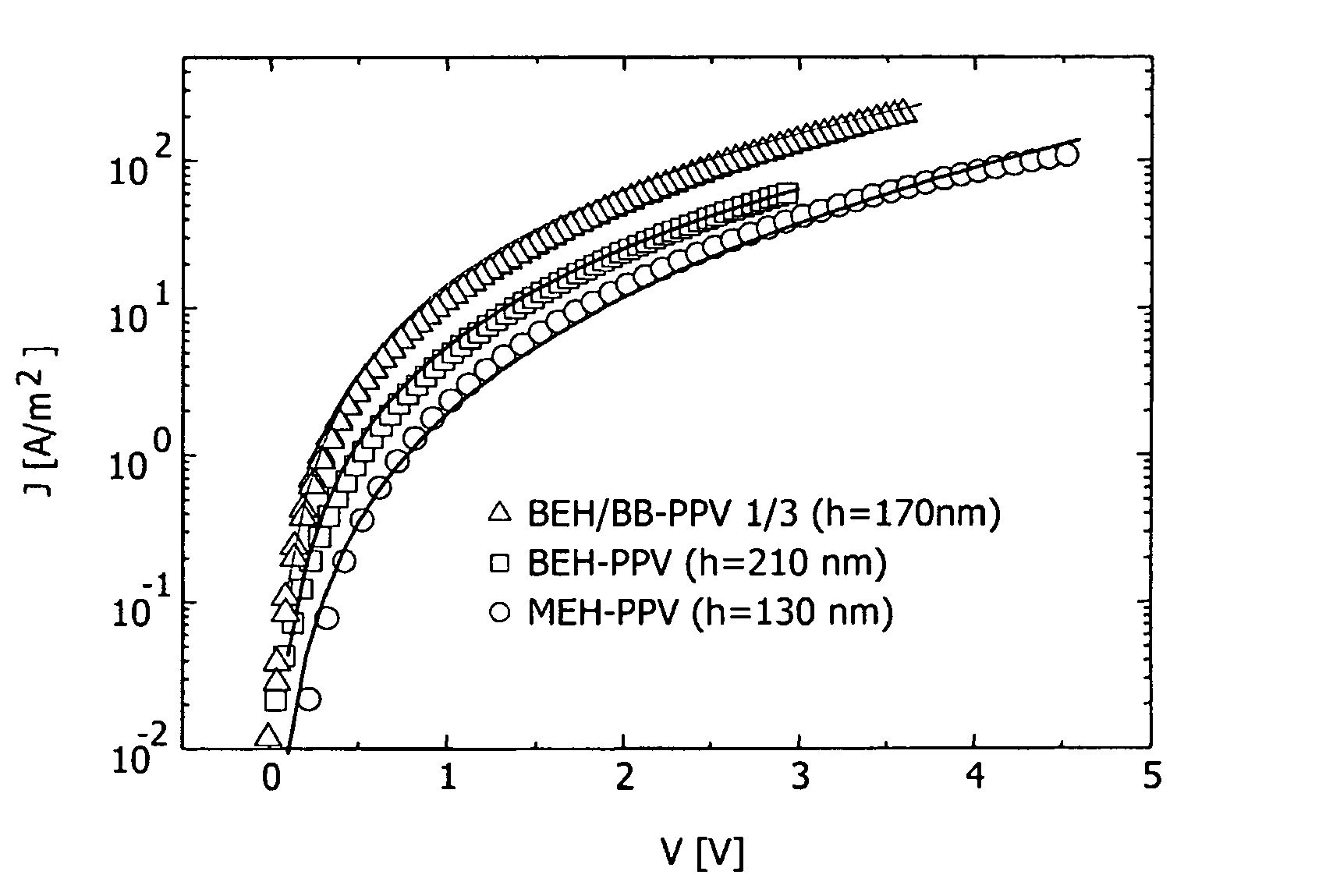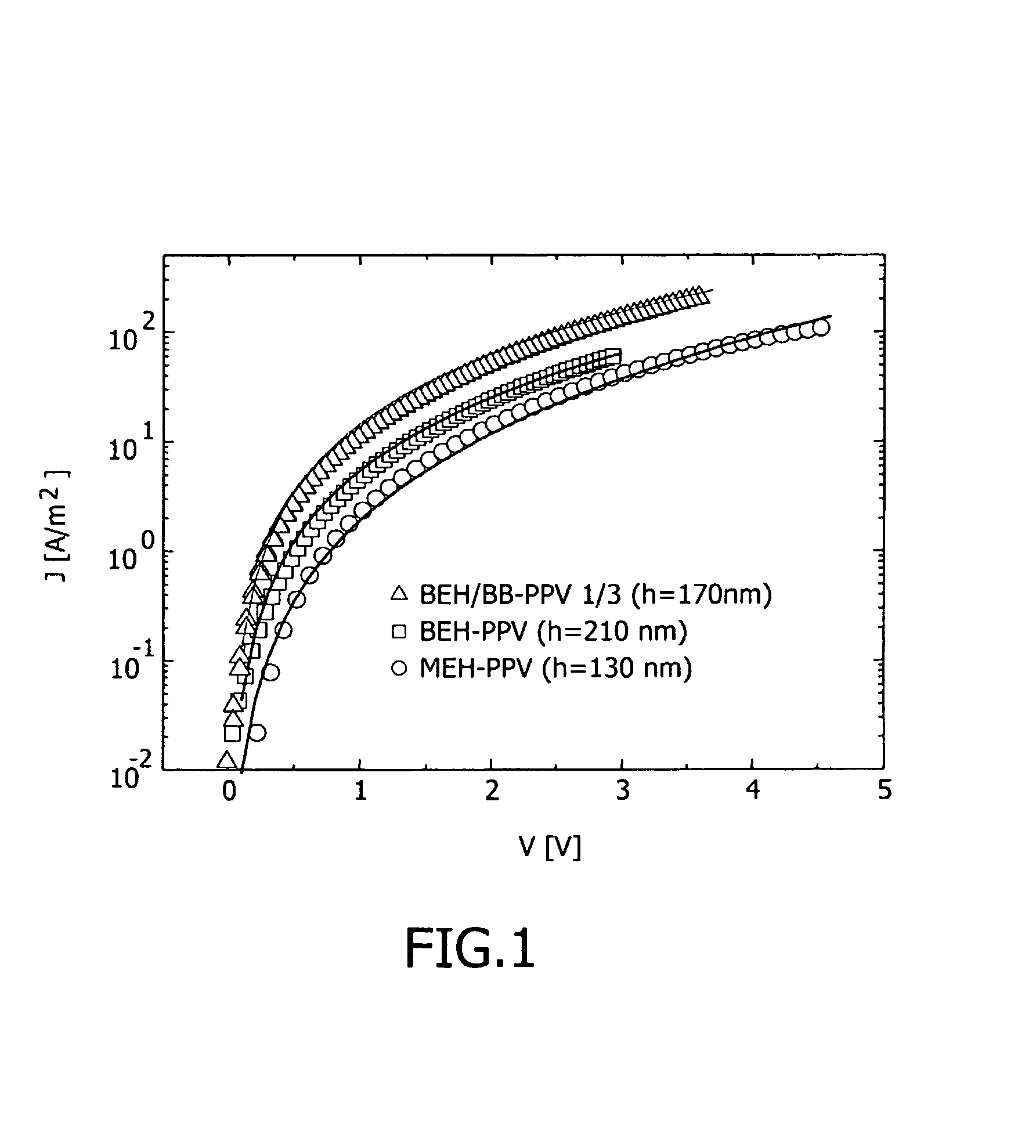Copolymer for charge transport layer in opto-electronic device
a technology of optoelectronic devices and copolymers, which is applied in the direction of natural mineral layered products, layered products, chemistry apparatuses and processes, etc., can solve the problem of not and achieve the reduction of ppv derivatives can be enhanced, and the effect of reducing the solubility of polymers
- Summary
- Abstract
- Description
- Claims
- Application Information
AI Technical Summary
Benefits of technology
Problems solved by technology
Method used
Image
Examples
Embodiment Construction
[0018]Although the preferred embodiments relate to a light-emitting device (LED), the copolymer of the invention may be used in other opto-electrical devices comprising more than one layer of a conjugated polymer.
[0019]Polymer synthesis: MEH-PPV, BEH-PPV, and BEH / BB-PPV ⅓ were synthesized according to the procedure of MEH-PPV in the presence of 0.5-1.0% of 4-methoxyphenol, by Neef et al. in Macromolecules 2000, 33, 2311. The structures of the polymers used are shown below. The precursors were carefully purified by crystallization (3×) and the obtained polymers were purified by a second precipitation from acetone. NRS-PPV has been synthesized according to the procedure indicated in Adv. Mater. 1998, 10, 1340.
[0020]Polymer analysis: Molecular weights were determined by gel permeation chromatography (GPC); they were measured in trichlorobenzene at 135° C. and calibrated with polystyrene standards.
[0021]
[0022]The combination of BEH-PPV and BB-PPV in various ratios in copolymers can indu...
PUM
| Property | Measurement | Unit |
|---|---|---|
| area | aaaaa | aaaaa |
| area | aaaaa | aaaaa |
| temperature | aaaaa | aaaaa |
Abstract
Description
Claims
Application Information
 Login to View More
Login to View More - R&D
- Intellectual Property
- Life Sciences
- Materials
- Tech Scout
- Unparalleled Data Quality
- Higher Quality Content
- 60% Fewer Hallucinations
Browse by: Latest US Patents, China's latest patents, Technical Efficacy Thesaurus, Application Domain, Technology Topic, Popular Technical Reports.
© 2025 PatSnap. All rights reserved.Legal|Privacy policy|Modern Slavery Act Transparency Statement|Sitemap|About US| Contact US: help@patsnap.com



